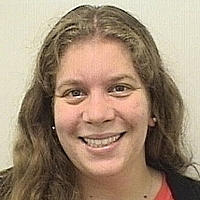Physics & Astronomy - Virtual PhD Thesis Defense - Kathryn Weil, Dartmouth
Title: "High-Velocity Ejecta in Core-Collapse and Thermonuclear Supernovae"
Abstract: Supernovae (SNe) play an important role for chemical enrichment in the interstellar medium and
of their host galaxies and the creation of neutron stars and stellar-mass black holes. Using multiwavelength
ground- and space-based observations, I have investigated the chemical content and
dynamics of core-collapse supernovae (Type II) and thermonuclear (Type Ia) supernovae and
supernova remnants (SNRs) to gain insights into the end stages of stellar evolution. Studies of
evolved SNe and young SNRs can inform us about some of the details regarding SN ejecta
evolution and interactions with the local circumstellar and interstellar environment. My study of
the large-scale interstellar environment around the 350 year old galactic SNR, Cas A, has led to a
better understanding of its progenitor's pre-SN mass-loss history. My spectroscopic study of the
Type II-P SN 2017eaw's late-time nebular phase emission obtained nearly three years postmaximum
light revealed the first evidence for its circumstellar interaction with a shell of massloss
material, expelled approximately 2000-2500 years prior to explosion. I also developed a new
optical detection technique for SNRs based on the spectral properties of historical SNe to better
identify very young SNRs (age < 1000 yr) through blueshifted oxygen emission, unique to high
velocity shocked-gas in century old SNe. This technique is a promising new tool to also probe
the poorly understood transition phase between SN outburst and SNR formation, and I also will
discuss my discovery of late-time emission from the Type II SN 1941C, the oldest detected
historical supernova as it evolves into a young core-collapse remnant. Lastly, I will describe my
work on the freely expanding ejecta of the thermonuclear supernova, SN 1885 in M31, to create
a 3D map of the iron and calcium ejecta distributions used to test various SN Ia denotation
models.
